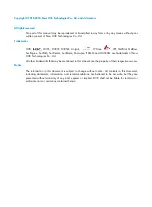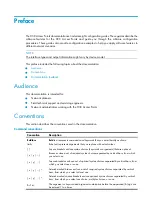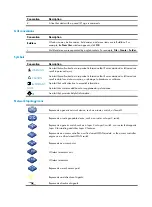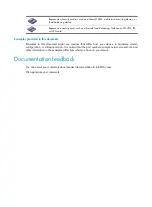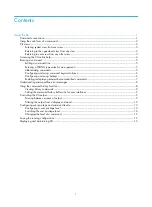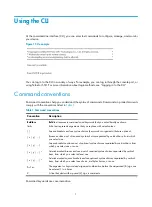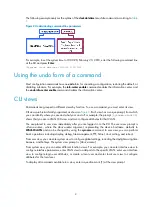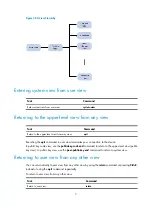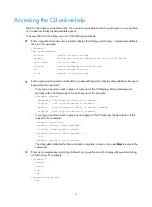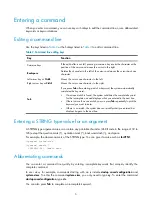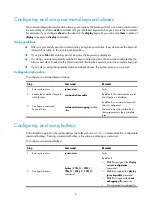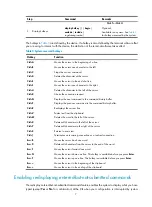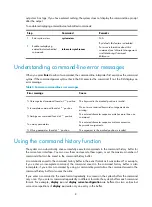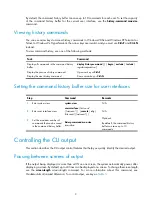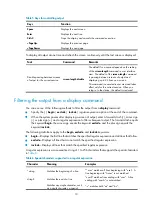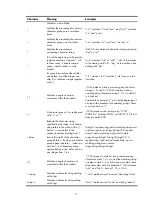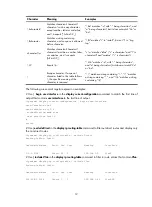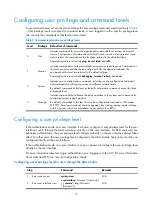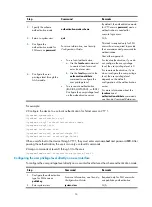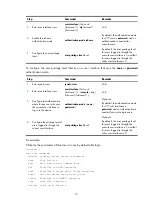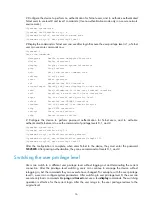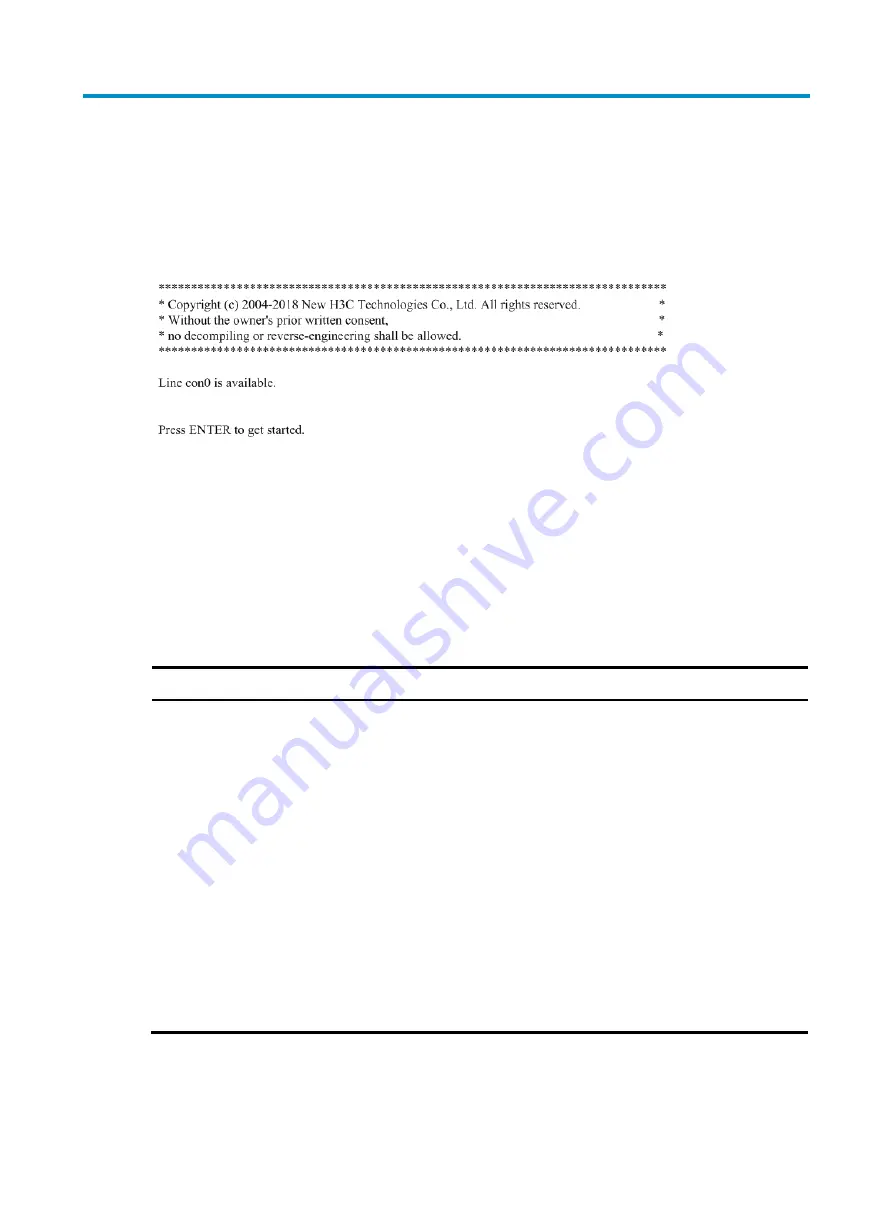
1
Using the CLI
At the command-line interface (CLI), you can enter text commands to configure, manage, and monitor
your device.
Figure 1
CLI example
You can log in to the CLI in a variety of ways. For example, you can log in through the console port, or
using Telnet or SSH. For more information about login methods, see "Logging in to the CLI."
Command conventions
Command conventions help you understand the syntax of commands. Commands in product manuals
comply with the conventions listed in
Table 1
Command conventions
Convention Description
Boldface Bold
text represents commands and keywords that you enter literally as shown.
Italic
Italic
text represents arguments that you replace with actual values.
[ ]
Square brackets enclose syntax choices (keywords or arguments) that are optional.
{ x | y | ... }
Braces enclose a set of required syntax choices separated by vertical bars, from which
you select one.
[ x | y | ... ]
Square brackets enclose a set of optional syntax choices separated by vertical bars, from
which you select one or none.
{ x | y | ... } *
Asterisk marked braces enclose a set of required syntax choices separated by vertical
bars, from which you select at least one.
[ x | y | ... ] *
Asterisk marked square brackets enclose optional syntax choices separated by vertical
bars, from which you select one choice, multiple choices, or none.
&<1-n>
The argument or keyword and argument combination before the ampersand (&) sign can
be entered 1 to n times.
#
A line that starts with a pound (#) sign is comments.
Command keywords are case insensitive.


